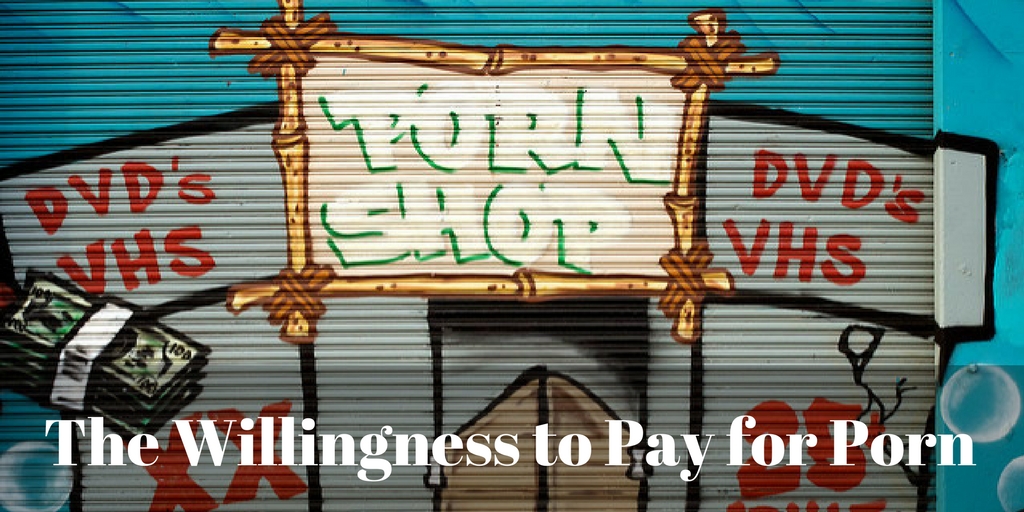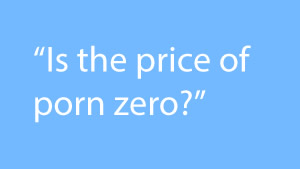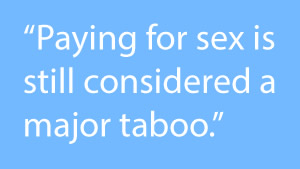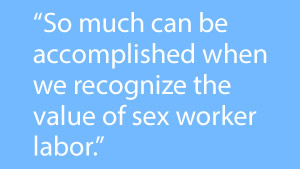PinkLabel.tv
Independent erotic and adult films at the touch of your fingertips
ENTER* EXIT HERE*WARNING: This site contains sexually explicit materials. By continuing, you acknowledge the following: 1) You are 18 YEARS OF AGE or older. 2) You will not exhibit material from this site to a minor and will carefully ensure that no minor has access to it. 3) The material from this site is acceptable to the average adult according to community standards. 4) Persons who may be offended by such depictions are not authorized and are forbidden to access this site. 5) The material on this site will not be used against the site operator or any other person in any way and will be used only for personal viewing in a private residence. 6) You assume full responsibility for your actions.
Resources for Parents: Microsoft Family Safety, Google Safety Centre, Apple Parental Control Measures, Qustodio, Net Nanny, Mobicip, Kapersky Safe Kids
If you are a young person looking for information about sex, please go to Scarleteen.com
Thank You for Verifying Your Age!
- We know you are over 18... and nothing else. All data you provided as part of the verification process has been deleted.
- We do not store data about your age in our system. Non-members who access our site from another device or clear browser data will have to verify their age again.
- Become a Member and you won't need to verify again.
- Questions? Learn more about Age Verification here.
By continuing, you acknowledge the following: 1) You are 18 YEARS OF AGE or older, as verified. 2) You will not exhibit material from this site to a minor and will carefully ensure that no minor has access to it. 3) The material from this site is acceptable to the average adult according to community standards. 4) Persons who may be offended by such depictions are not authorized and are forbidden to access this site. 5) The material on this site will not be used against the site operator or any other person in any way and will be used only for personal viewing in a private residence. 6) You assume full responsibility for your actions.
The Willingness to Pay for Porn

Creative producer, media-maker, artist, writer, and activist Creatrix Tiara is currently taking Harvard Business School’s HBX CORe, a 3-month online business fundamentals course in analytics, accounting, and economics. This is a repost with permission from her #BusinessyBrunette weekly series, where she adapts what she’s learning to make it meaningful to artists, activists, geeks, nerds, fans, and anyone else who doesn’t fit the MBA Mould. Follow along on Medium or sign on to her Patreon for early access.
The Willingness to Pay for Porn
Willingness To Pay, in its simplest terms, is the maximum price a person is willing to pay for a particular product or to resolve a particular problem. Businesses measure their customer’s WTPs to build up a demand curve, which reflects the quantity demanded at each price point.
These videos from Dr Buckley give a decent overview over the concepts of Willingness To Pay and demand curves — I recommend watching these before moving on if you’re unfamiliar with the concepts.
Video: Willingness to Pay
Video: Demand Curve
Many factors can affect someone’s WTP, depending on the product. Tickets to a show? Your WTP would depend on who’s performing, the weather, the venue, the distance and effort it’ll take for you to get there. Hungry? Your WTP might be higher for one type of cuisine over another. Personal income, mood, accessibility, reputation…all kinds of factors can affect your WTP.
What doesn’t affect WTP? Price.
Your Willingness to Pay doesn’t change because the item’s prices changed. What does change is the quantity demanded.
For instance, suppose you were willing to pay $20 for a book. The book retails at $20. OK great! This book fits your WTP, so you go for it.
Now there’s been a 50% discount, making the book $10. Your WTP is still $20. However, because you can now afford two books, you would probably be willing to buy two books instead of just one. (This is assuming that your WTP for the second book is $10 or more — see the above WTP video to learn more about diminishing returns.)
So in the Economics for Managers module in HBX CORe, after all of this was set up, some students were randomly asked:
Name an item where the price is zero but the Willingness to Pay was more than zero.
A few common necessities came up, such as air and water. Somebody answered “Facebook memberships” which I thought was pretty clever.
Then somebody answered “pornography”.
And got a ton of kudos for it.
I, on the other hand, was really frustrated and made counter-comments with tons of references about how that logic is faulty.
Here’s the thing. This isn’t an attack on my classmates — they’re hardly alone in their thinking. But just because many people hold the same assumption doesn’t mean that assumption is true.
Is the WTP for porn greater than zero? For some people, sure.
Is the price of porn zero?
HELL NO!
And assuming this is the case actually does a ton of disservice to sex workers who rely on income from pornographic productions to survive.
 The devaluing of sex work in society — especially when paired with the devaluing of creative labor, Internet work, and the work of marginalized people — drives Willingness to Pay closer to zero, affecting people’s perceptions of the price of porn, and thus having a negative effect on sex workers’ livelihoods!
The devaluing of sex work in society — especially when paired with the devaluing of creative labor, Internet work, and the work of marginalized people — drives Willingness to Pay closer to zero, affecting people’s perceptions of the price of porn, and thus having a negative effect on sex workers’ livelihoods!
There is some pornography that is available for free, just like there is some of everything available for free. But unlike air, Facebook accounts, or (in most ideal cases) water, porn isn’t free by default.
Porn costs money to produce. There are the usual costs associated with any kind of screen production — tech, cameras, lighting, sound, set, wardrobe, hair and make-up, the labor of actors and crew. Then there are the extra costs particular to porn: managing paperwork, actors getting STI checks beforehand, toys, protection (condoms, dams, gloves, so on). Editing and post-production costs money, marketing costs money, admin costs money.
Yet many porn production companies, particularly smaller, feminist, indie companies run by and for marginalized people (such as women, queer and trans people, and people of color), are finding it hard to get financing for their work. As Bitch Media’s Lyndsey G notes:
Right out of the gate, adult startups of all types have it tough. Investors are terrified of them. Small business loans for porn startups are virtually impossible to get due to banks’ morality clauses. Kickstarter and most other crowdfunding websites do not permit pornographic projects to raise funds on their platforms. […]
Getting the money is one hurdle — keeping it is another.
The mere mention of the ‘P-word’ sets off red flags for banks with honored morality clauses. […] Most adult entertainment startups must resort to moving their money through innocuously-named ‘holding companies’ to fly under the radar.
Indeed, despite the Internet being seen by some as a major boon to the adult industry, the systemic discrimination against sex workers by most of the top online payment processors — including PayPal, JP Morgan Chase, Visa, Mastercard, and Square — have made it extremely difficult for sex workers to be paid for their work online. Writer and sex worker rights activist Violet Blue calls this practice “weblining”, comparing it to the old banking practice of redlining, where otherwise-qualified clients from supposedly “high-risk” neighborhoods, largely populated by people of color, were denied service:
To redline a community was to cut it off from equal financial access, rights and opportunities. Being redlined was a death sentence for getting out of poverty. […]
What’s happening to female entrepreneurs in the sex business can no longer be written off as isolated incidents. Weblining’s targeted populations are porn performers, sex workers, independent retailers, erotic writers and the internet’s new generation of online pornographers: business sectors comprised of a disproportionately large number of women and LGBT people.
The companies that are willing to work with sex workers tend to charge exorbitant fees for their service. Lyndsey G noted that adult crowdfunding platform Offbeatr takes a 30% fee from successful projects, significantly higher than Kickstarter or Indiegogo’s 5%; Offbeatr claims that this is due to their limitation to working with payment processors with exorbitant fees — for example, CCBill or Verotel.
Even with these challenges and limitations, some porn companies still try their best to treat their employees fairly, recognizing the value of sexual labor. Tobi Hill-Meyer, the creator of the trans-women-centered Doing It Online, insists on paying performers:
“With sexual labor it’s important to be paid because it’s often a kind of labor that is undervalued,” says Hill-Meyer. “To accept free labor makes it a norm in the industry and I don’t want to encourage people to make those decisions when they otherwise would not do so.”
While Hill-Meyer and many others are fighting back against free labor in the porn industry, porn consumers are making it harder on them by pirating their work, with no money being channeled to the producers and performers. Performers like Jiz Lee, who has called for “ethical porn consumption”, have noted that porn piracy can sometimes be even more exploitative than performing in porn:
To be honest, the only time I’ve ever felt exploited, as a performer in porn, is when my work is pirated. When I sign a contract, it’s between the producer and myself. For someone else to assume that right feels non-consensual. (Technically, it’s illegal and a breach of site usage and copyright.) But it also hurts the profit margins that allow us to keep making work. I once came across a video I was in that had been viewed over 50,000 times. If even a fraction of those views had been paid for, the small porn company would have been able to produce another feature, pay performers more, and increase the quality and frequency of their work.
In some ways, the issue of Willingness to Pay being close to zero for pornography connects with issues of other creative producers, including musicians, YouTubers, and writers, struggling to earn money online — and facing intense hostility when they are upfront about being paid what they’re worth. And certainly part of the resistance against paying for porn is an overall resistance to paying for creative work, plus the supposed weirdness of paying for anything on the Internet: a dire mix of Artists Should Do It For The Love of Art, the dark side of Information Wants To Be Free, and The Internet Isn’t Real Life.

However, porn also has to deal with additional stigmas associated closely with sex work: for instance, most sex work is gendered as women’s work, which is already highly devalued — even more so for women of color and LGBTQ women. Society still fails to recognize sex work as a valid form of labor, even from other labor unions. Paying for sex is still considered a major taboo — extending past direct sexual services towards sexual products, including porn. And while this piece has largely focused on the struggles of independent producers and performers, even larger companies are feeling the burn.
All of these stigmas, misconceptions, and taboos that are aimed at sex work and porn producers contribute to a Willingness to Pay edging closer to zero. And how do we know that people’s WTP is close to zero, if not already zero?
If their Willingness to Pay for porn was higher, they wouldn’t necessarily need to or want to pirate porn or get it from free sources — they’d just pay for it, like they would for anything else they value.
Sex workers already face immense discrimination from other avenues of making money — whether driven to sex work due to discrimination in seeking employment, having payment processors shut down fundraisers for non-sex-work-related matters due to their occupation, or being unable to get a job outside of sex work due to prior job history. Many turn to porn as an accessible source of income, as well as a creative and community-building outlet — but the significant downturn in consumers’ WTP would greatly affect their ability to survive and support themselves.
To raise our WTP for anything, we need to recognize and appreciate the value of the product or service in consideration. To raise our WTP for porn, we need to recognize sex work, as well as creative work, Internet work, and the work of marginalized people, as work with value.
Some of us will never develop any WTP for porn for any reason, and that’s fine. But all of us, porn consumers or not, can work together to dismantle the stigmas around sex work, recognizing sex work as valid and valuable labor — which goes a long way towards increasing societal appreciation for the costs of porn production, increasing Willingness to Pay en masse.
Supporting the increase of Willingness to Pay for porn doesn’t just start and end at paying for porn. We need to demand that payment processors be more fair and equitable towards sex workers, and work with sex workers on alternatives that are truly sex-worker friendly not just in access but also in cost. Investors need to be more willing and open to fund projects that involve sexuality and/or sex workers. We need to fight against whorephobia and structural violence towards sex workers, including anything that’s driving the “morality clauses” that inform institutional attitudes towards sex work. And we need to stand in solidarity with sex workers in advocating for their rights, their safety, their livelihoods.
 Through these efforts, we can support the improvement in sex workers’ living and working conditions by increasing their ability to finance and develop such improvements — such as better pay for performers and crew, more safer sex materials, healthcare, the freedom to experiment with greater production and artistic values, and the ability to perform and produce and create on their own terms. So much can be accomplished when we recognize the value of sex worker labor, and create pathways for that value to be fairly compensated.
Through these efforts, we can support the improvement in sex workers’ living and working conditions by increasing their ability to finance and develop such improvements — such as better pay for performers and crew, more safer sex materials, healthcare, the freedom to experiment with greater production and artistic values, and the ability to perform and produce and create on their own terms. So much can be accomplished when we recognize the value of sex worker labor, and create pathways for that value to be fairly compensated.
The price for porn, despite what some people want to think, isn’t and shouldn’t always be zero. Regardless of price — because Willingness to Pay is not affected by price — we can work towards increasing Willingness to Pay for the labor of sex workers by actually valuing them and their efforts, and breaking our assumptions of porn and sex work as not being worthy of pay.
Further Reading & Watching:
- Melissa Gira Grant — Who speaks for women who work in the adult industry? (The Guardian)
- Nichi Hodgson — How To Watch Porn Ethically (AskMen)
- Jiz Lee— 3 ways to start watching porn ethically (The Daily Dot)
- Erika Lust — How to be an ethical porn consumer in nine easy steps (The Independent)
- Janet Mock — Janet Mock on Sex Work & Redefining Realness (YouTube)
- Chelsea Poe—5 Ways To Support Ethical Porn (Even If You Can’t Afford It) (Autostraddle)
- Kitty Stryker— Branded: Sex Workers on Social Media (AlterConf)
Featured article image: Underwater Porn Shop, Jeremey Brooks via Flickr, CC BY 2.0.
Email Newsletter:
Sign up for our Email Newsletter!Topics:
CRASH COURSE: Filmmaker Resources
CROWDFUNDING PORN
EXPOSE YOURSELF: Awards & Festivals
PORN CLUB: Adult Film Reviews
PORN STUDIES: Essays & Reviews
SPOTLIGHT: Pornographer Interviews
VIEWER GUIDES
WATCH: Related Videos
Featured Playlist

Upcoming Events:
April 2024 |
||||||
|---|---|---|---|---|---|---|
| Mon | Tue | Wed | Thu | Fri | Sat | Sun |
|
1
|
2
|
3
|
4
|
5
|
6
|
7
|
|
8
|
9
|
10
|
11
|
12
|
13
|
14
|
|
15
|
16
|
17
|
18
|
19
|
20
|
21
|
|
22
|
23
|
24
|
25
|
26
|
27
|
28
|
|
29
|
30
|
|||||
On Instagram:
Meanwhile, at the CrashPad:
Happy Valentine’s Day! CrashPad’s NSFW Sex Toy Shopping Guide
CrashPad's NSFW sex toy shopping guide inspires self-love, gift buying, and supports other queer and female-owned businesses.
The post Happy Valentine’s Day! CrashPad’s NSFW Sex Toy Shopping Guide appeared first on CrashPad Series.
 PINKLABEL.tv
PINKLABEL.tv







